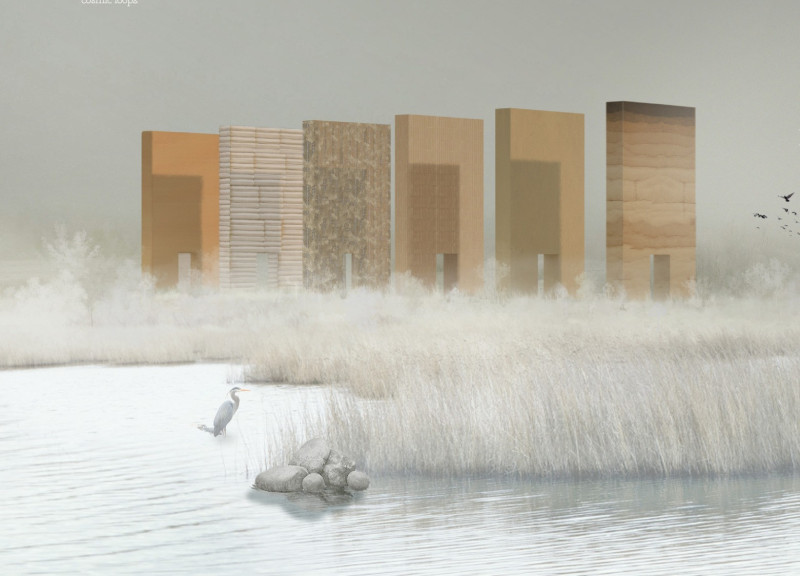5 key facts about this project
Tellure represents a unique blend of architecture and land art, designed to foster a relationship between human structures and the natural surroundings. The project unfolds with six distinct portals, constructed using various raw earth techniques. Each portal reflects historical building methods, offering a contemporary perspective on the evolution of architecture. Set within the landscape, Tellure serves both as a landmark and a thoughtful exploration of humanity's connection to nature and time.
Architectural Concept
The design centers around themes of permanence and change. Each portal stands as a solid figure, compelling visitors to think about how it was built and its form. The structure showcases a range of construction techniques, progressing from simple to complex forms. This hierarchy emphasizes the importance of earth, which becomes a central focus of the installation.
Material and Technique
Key materials used in the project include rammed earth, cob, wattle and daub, earth bags, and 3D printed elements. These choices have been made to highlight both their historical importance and ecological significance. By using these materials and techniques, the project creates a connection between the past and present, linking ancient ways of building with modern architectural thought.
Natural Erosion
The approach taken allows for no maintenance once the installation is complete. This is intentional, as natural erosion plays a vital role in the project's evolution. Over time, the portals will change, revealing only their framework as they wear away due to weather conditions. This aspect encourages reflection on how buildings and nature interact. It emphasizes the idea that architectural forms are not permanent and must adapt to their environment.
Cultural Symbolism
Cultural narratives are also present in Tellure, particularly through the concept of the Great Mother, a figure found in many cultures. This element highlights cycles of birth, growth, maturity, decline, and renewal. The design thoughtfully weaves this symbolism into the experience, emphasizing the bonds between all living things and the land they inhabit.
Intricate details within the design invite exploration. The differing textures and forms of the portals respond to sunlight and weather. This interaction enhances the experience of the installation, creating a space that evolves alongside its surroundings.



















































